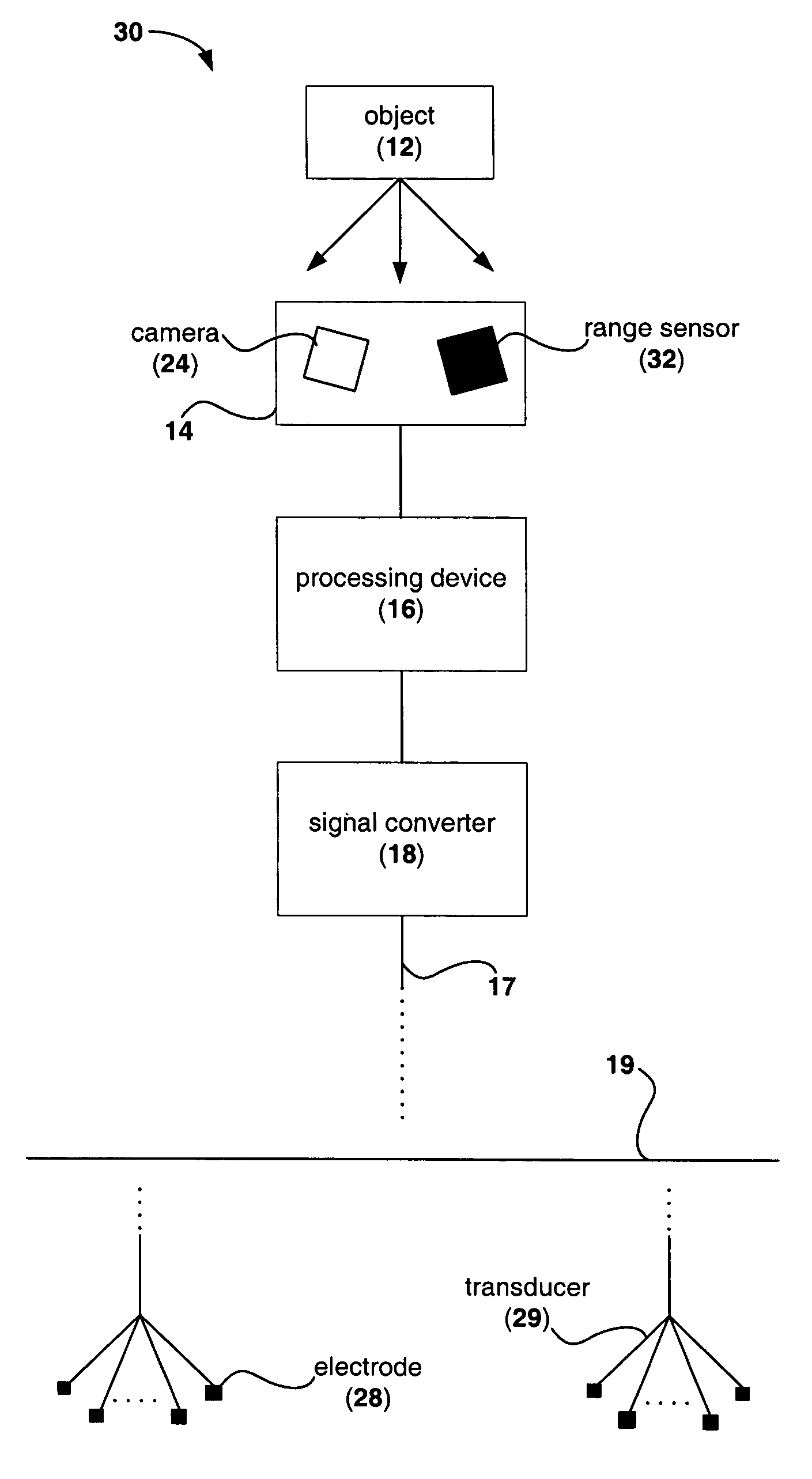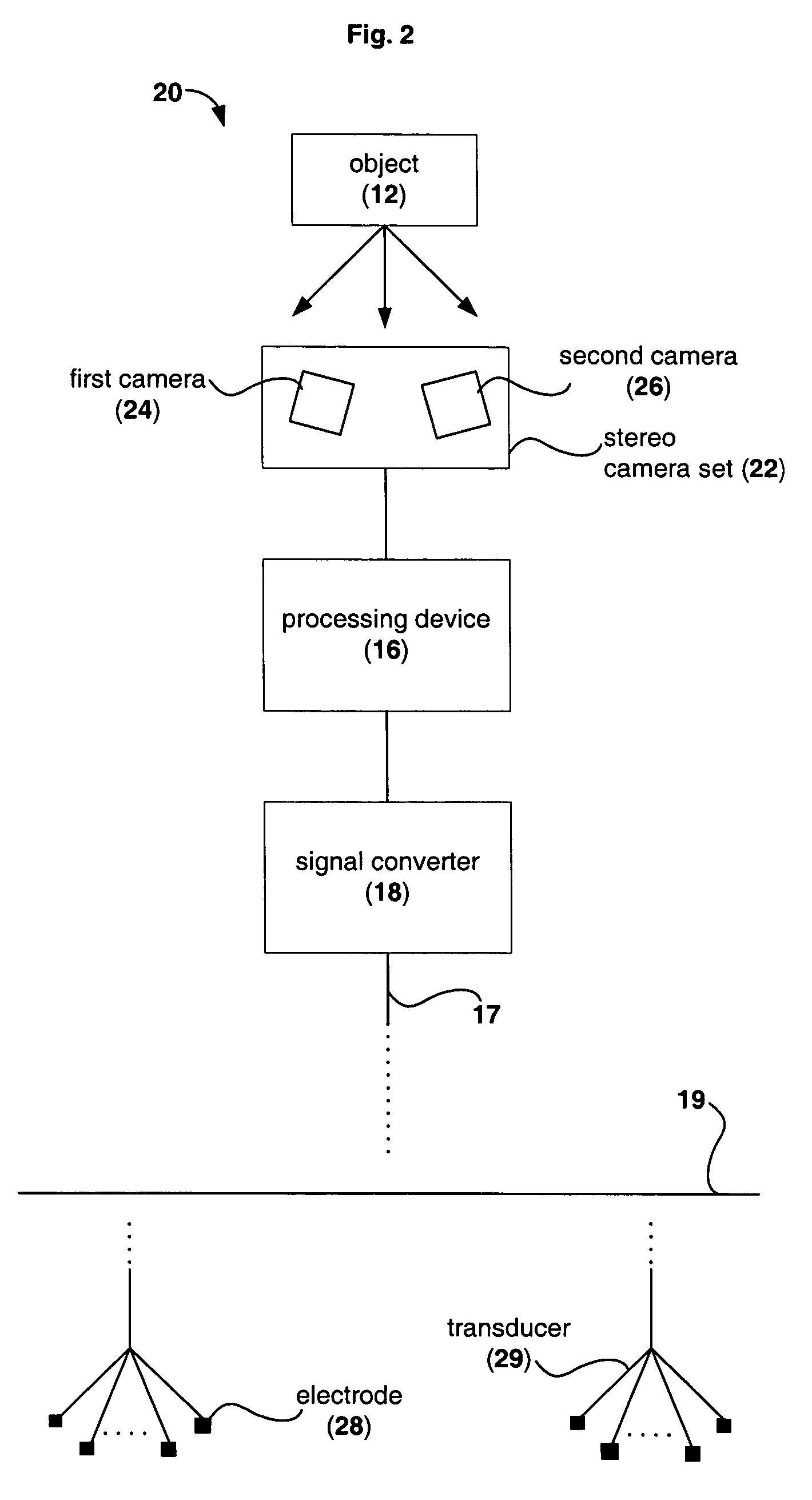Device for providing perception of the physical environment
a technology of physical environment and perception device, applied in the field of physical environment perception device, can solve the problems of many thousands of blind people every year, no resemblance, and difficulty in imagining something more profoundly disabling than losing sigh
- Summary
- Abstract
- Description
- Claims
- Application Information
AI Technical Summary
Benefits of technology
Problems solved by technology
Method used
Image
Examples
embodiment
Preferred Embodiment
[0033] A preferred embodiment provides a 3D substitute vision device which enables a user, for example, though not necessarily, a blind user, to perceive the 3D structure, and optionally colour, of the immediate environment in sufficient detail for localisation, navigation and obstacle avoidance to be performed. The user interface utilises redundant nerves in the skin that provide an intuitive interface for the 3D structure of the environment to be perceived via artificial sensors. Various embodiments are described that provide a user with colour information, however it should be appreciated that provision of colour information is optional and not essential to the invention.
[0034] A particular example embodiment is described as a sensory aid for enabling the blind to perceive the location and colour of objects, features and surfaces in the surrounding environment via electro-tactile electrodes and / or vibro-tactile actuators. The sensory aid includes image and ra...
PUM
 Login to View More
Login to View More Abstract
Description
Claims
Application Information
 Login to View More
Login to View More - R&D
- Intellectual Property
- Life Sciences
- Materials
- Tech Scout
- Unparalleled Data Quality
- Higher Quality Content
- 60% Fewer Hallucinations
Browse by: Latest US Patents, China's latest patents, Technical Efficacy Thesaurus, Application Domain, Technology Topic, Popular Technical Reports.
© 2025 PatSnap. All rights reserved.Legal|Privacy policy|Modern Slavery Act Transparency Statement|Sitemap|About US| Contact US: help@patsnap.com



